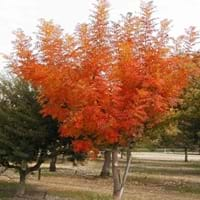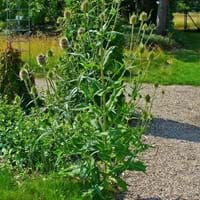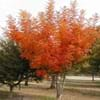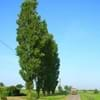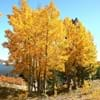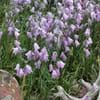Life Span
Perennial
Biennial
Type
Tree
Flowering Plants, Herbs
Origin
China
Europe, Asia
Types
Not Available
Not Available
Habitat
Mountains, Rocky areas
Rocky areas, Semi desert, Subtropical climates
USDA Hardiness Zone
6-9
5-8
Sunset Zone
4, 5, 6, 7, 8, 9, 10, 11, 12, 13, 14, 15, 16, 17, 18, 19, 20, 21, 22, 23
21,22
Habit
Oval or Rounded
Upright/Erect
Flower Color
Red, Green
Purple
Flower Color Modifier
Bicolor
Bicolor
Fruit Color
Red, Blue, Green, Dark Blue, Black
Non Fruiting Plant
Leaf Color in Spring
Green, Light Green
Green
Leaf Color in Summer
Green, Dark Green
Green
Leaf Color in Fall
Red, Orange, Pink
Green
Leaf Color in Winter
Not Available
Light Green
Plant Season
Summer, Fall
Summer, Fall, Winter
Sunlight
Full Sun, Partial Sun
Full Sun
Growth Rate
Medium
Very Fast
Type of Soil
Clay, Loam, Sand
Clay, Loam
The pH of Soil
Acidic, Neutral, Alkaline
Acidic, Neutral, Alkaline
Soil Drainage
Well drained
Average
Bloom Time
Early Spring, Spring
Summer, Late Summer
Tolerances
Pollution, Drought, Soil Compaction
Not Available
Where to Plant?
Ground
Ground, Pot
How to Plant?
Divison, Seedlings, Stem Planting, Transplanting
Seedlings, Stem Planting
Plant Maintenance
Medium
Medium
Watering Requirements
Average Water Needs, Water once every two or three weeks, Water when top layer of soil becomes dry
Average Water Needs
In Summer
Lots of watering
Lots of watering
In Spring
Moderate
Moderate
In Winter
Average Water
Average Water
Soil pH
Acidic, Neutral, Alkaline
Acidic, Neutral, Alkaline
Soil Type
Clay, Loam, Sand
Clay, Loam
Soil Drainage Capacity
Well drained
Average
Sun Exposure
Full Sun, Partial Sun
Full Sun
Pruning
Remove damaged leaves, Remove dead branches, Remove dead leaves
Remove damaged leaves, Remove dead branches, Remove dead leaves, Requires very little pruning
Fertilizers
All-Purpose Liquid Fertilizer
All-Purpose Liquid Fertilizer
Pests and Diseases
Insects, Red blotch, Rodent
Pests and diseases free
Plant Tolerance
Drought, Frost
Drought
Flowers
Insignificant
Showy
Flower Petal Number
Not Available
Single
Foliage Texture
Medium
Coarse
Foliage Sheen
Glossy
Glossy
Allergy
no allergic reactions
Skin irritation
Aesthetic Uses
Beautification, Landscape Designing, Showy Purposes
Showy Purposes
Beauty Benefits
Not Available
Not Available
Environmental Uses
Air purification
Air purification
Medicinal Uses
No Medicinal Use
No Medicinal Use
Part of Plant Used
Seeds, Stem
Flowers
Other Uses
Application in Furniture, Decoration Purposes, Showy Purposes, Used in biomass, Used in Furniture
Dried heads are used in floristry, Used as Ornamental plant
Used As Indoor Plant
No
No
Used As Outdoor Plant
Yes
Yes
Garden Design
Shade Trees, Street Trees
Wildflower
Botanical Name
PISTACIA chinensis
DIPSACUS fullonum
Common Name
Chinese Mastic, Chinese Pistachio
Fuller's Teasel
In Hindi
चीनी पिस्ता
Fuller's Teasel
In German
chinesische Pistazie
Fullers Karde
In French
pistache chinois
Cardère à foulon
In Spanish
pistacho chino
Cardo de Fuller
In Greek
Κινέζοι Φιστίκι
Νεράγκαθο του Fuller
In Portuguese
Pistache chinês
Carda de Fuller
In Polish
Chiński Pistacje
Fullera Oset
In Latin
LENTISCUS Chinese
Teasel Fullonis
Phylum
Magnoliophyta
Anthophyta
Class
Magnoliopsida
Magnoliopsida
Order
Sapindales
Dipsacales
Family
Anacardiaceae
Dipsacaceae
Clade
Angiosperms, Eudicots, Rosids
Angiosperms, Asterids, Eudicots
Tribe
Rhoeae
Not Available
Subfamily
Not Available
Dipsacoideae
Number of Species
Not Available
Properties of Chinese Pistachio and Fuller's Teasel
Wondering what are the properties of Chinese Pistachio and Fuller's Teasel? We provide you with everything About Chinese Pistachio and Fuller's Teasel. Chinese Pistachio doesn't have thorns and Fuller's Teasel doesn't have thorns. Also Chinese Pistachio does not have fragrant flowers. Chinese Pistachio has allergic reactions like no allergic reactions and Fuller's Teasel has allergic reactions like no allergic reactions. Compare all the properties and characteristics of these two plants. Find out which of these plant can be used as indoor plant. If you are interested to decorate your house and garden, find out aesthetic uses, compare them and select the plant which will beautify your surrounding. Along with beautification, try comparing medicinal and edible uses of Chinese Pistachio and Fuller's Teasel and you can choose the plant having best and most benefits.
Season and Care of Chinese Pistachio and Fuller's Teasel
Season and care of Chinese Pistachio and Fuller's Teasel is important to know. While considering everything about Chinese Pistachio and Fuller's Teasel Care, growing season is an essential factor. Chinese Pistachio season is Summer and Fall and Fuller's Teasel season is Summer and Fall. The type of soil for Chinese Pistachio is Clay, Loam, Sand and for Fuller's Teasel is Clay, Loam while the PH of soil for Chinese Pistachio is Acidic, Neutral, Alkaline and for Fuller's Teasel is Acidic, Neutral, Alkaline.
Chinese Pistachio and Fuller's Teasel Physical Information
Chinese Pistachio and Fuller's Teasel physical information is very important for comparison. Chinese Pistachio height is 760.00 cm and width 760.00 cm whereas Fuller's Teasel height is 150.00 cm and width 30.00 cm. The color specification of Chinese Pistachio and Fuller's Teasel are as follows:
Chinese Pistachio flower color: Red and Green
Chinese Pistachio leaf color: Green and Light Green
Fuller's Teasel flower color: Purple
- Fuller's Teasel leaf color: Green
Care of Chinese Pistachio and Fuller's Teasel
Care of Chinese Pistachio and Fuller's Teasel include pruning, fertilizers, watering etc. Chinese Pistachio pruning is done Remove damaged leaves, Remove dead branches and Remove dead leaves and Fuller's Teasel pruning is done Remove damaged leaves, Remove dead branches, Remove dead leaves and Requires very little pruning. In summer Chinese Pistachio needs Lots of watering and in winter, it needs Average Water. Whereas, in summer Fuller's Teasel needs Lots of watering and in winter, it needs Average Water.
